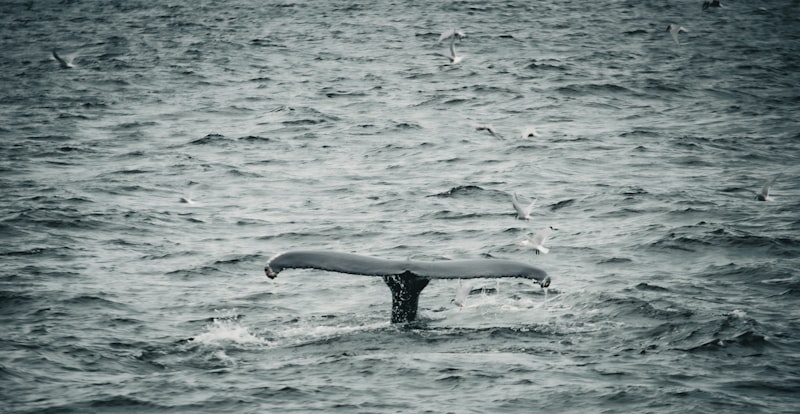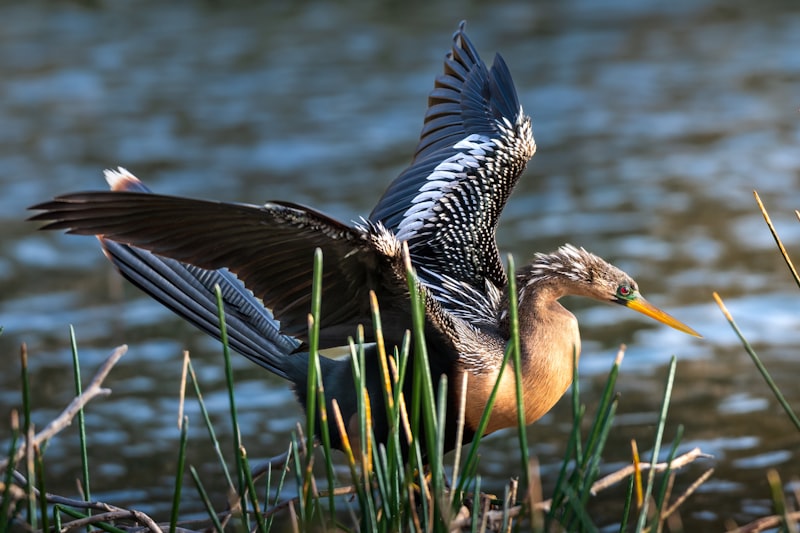One of the primary threats to sea birds is habitat loss due to coastal development and pollution. Nesting sites on cliffs and beaches are often disturbed or destroyed, leading to population declines. Conservationists work tirelessly to designate protected areas and implement regulations to limit human disturbance in these critical zones.
In addition to habitat protection, reducing plastic pollution is imperative for sea bird conservation. Many birds mistake plastic debris for food, leading to ingestion and often fatal consequences. Organizations and volunteers worldwide conduct beach clean-ups and advocate for reduced plastic use to mitigate this threat.
Climate change poses another significant challenge. Rising sea levels and ocean temperatures affect food availability for sea birds, disrupting breeding and migration patterns. Conservation efforts include monitoring bird populations, researching their behaviors, and promoting sustainable fishing practices to ensure adequate food sources.
Public awareness and education play a vital role in sea bird conservation. Through outreach programs, documentaries, and school initiatives, communities learn about the importance of these birds and how individual actions can make a difference. Engaging the public fosters a sense of stewardship and encourages support for conservation projects.
Overall, effective conservation efforts for sea birds require collaboration among governments, conservation organizations, and local communities. By addressing habitat loss, plastic pollution, climate change impacts, and raising awareness, we can safeguard these remarkable creatures and the marine environments they inhabit for future generations.
Reviving Hope: Innovative Strategies in Sea Bird Conservation
One innovative strategy gaining traction is the use of advanced tracking technologies. By fitting sea birds with GPS tags and satellite transmitters, researchers can monitor their movements in real-time. This data helps identify critical feeding areas, migration routes, and nesting sites, essential for creating effective conservation plans. Imagine being able to follow the journey of a wandering albatross across vast ocean expanses, unlocking mysteries of their behavior that were once inaccessible.
Furthermore, artificial intelligence (AI) is now playing a pivotal role. AI algorithms analyze vast amounts of data collected from bird colonies and habitats. This technology can predict environmental changes and potential threats, allowing conservationists to intervene proactively. It’s akin to having a crystal ball that foresees challenges before they escalate, enabling timely and targeted conservation efforts.
In the realm of public engagement, innovative storytelling has proven to be a powerful tool. Through immersive documentaries, virtual reality experiences, and interactive websites, conservationists are bringing the plight of sea birds closer to the hearts of people worldwide. These narratives not only educate but also inspire action, encouraging individuals and communities to participate in conservation initiatives.
Ultimately, the revival of hope for sea bird conservation hinges on these innovative strategies. By combining cutting-edge technology with passionate advocacy, we can chart a course towards a brighter future where these magnificent creatures thrive alongside healthy oceans. It’s a journey that invites everyone to be part of the solution, ensuring that generations to come can marvel at the grace and resilience of sea birds in their natural habitats.
From Peril to Protection: Success Stories in Sea Bird Preservation
One such triumph unfolds in the remote shores of the Pacific, where the Laysan albatross, with its graceful wingspan, has found sanctuary in protected marine reserves. These areas not only shield their nesting grounds from human interference but also ensure a sustainable habitat where these birds can thrive undisturbed. This initiative stands as a testament to how targeted conservation efforts can reverse the tide of endangerment.
Similarly, on the rugged cliffs of the Atlantic coastline, puffins—a beloved symbol of coastal ecosystems—have seen a resurgence. Through collaborative efforts between conservationists and local communities, critical breeding grounds have been safeguarded. By mitigating threats such as habitat loss and pollution, these initiatives have rekindled hope for the survival of these charismatic seabirds.
In the Southern Hemisphere, where the Southern Giant Petrel navigates the icy waters, innovative tracking technologies have provided crucial insights into their migration patterns and behaviors. By understanding their movements, conservationists can advocate for protected marine areas that overlap with their feeding grounds, ensuring a sustainable future for these enigmatic birds.
Each success story in sea bird preservation underscores the importance of proactive conservation measures and international collaboration. By addressing threats such as climate change, overfishing, and plastic pollution, we can pave the way for more success stories that celebrate the resilience of sea birds and inspire global efforts towards marine biodiversity conservation. Together, we can protect these ambassadors of our oceans, ensuring they continue to grace our skies for generations to come.
Challenges at Sea: How Climate Change Impacts Sea Bird Populations
Sea birds, masters of the skies and seas, are facing unprecedented challenges due to shifts in their environment. As temperatures rise and weather patterns become erratic, these creatures find their traditional habitats and food sources increasingly disrupted. Imagine a once lush feeding ground turned barren, forcing birds to travel farther and expend more energy in search of sustenance. It’s akin to a marathon runner suddenly finding the finish line moved miles away.
For many sea bird species, such as albatrosses and puffins, these changes mean more than just inconvenience; they threaten their ability to reproduce and maintain healthy populations. Rising sea levels encroach upon nesting sites, leaving chicks vulnerable to predators or unable to hatch at all. It’s like trying to build a home on shifting sands.
Moreover, the acidic nature of oceans, a consequence of increased carbon dioxide absorption, impacts marine life forms that form the base of the food chain. As fish populations dwindle or relocate, sea birds face dwindling food supplies, akin to a buffet closing early just as you arrive.
Adaptation is the name of the game for these resilient creatures, but the pace of climate change often outstrips their ability to adjust. Conservation efforts, such as protected marine areas and reducing carbon emissions, play a crucial role in safeguarding these majestic birds. Picture a lifeline thrown to a struggling swimmer in turbulent waters.
Guardians of the Coast: Community-Led Initiatives in Sea Bird Conservation
Picture this: a coastline where seabirds soar gracefully against a backdrop of azure skies and crashing waves. These majestic creatures play a vital role in coastal ecosystems, yet their populations face threats from habitat loss and human activities. In response, community-led initiatives have emerged as beacons of hope for sea bird conservation.
These initiatives are not just about protecting birds; they’re about fostering a deep connection between people and nature. Volunteers, often local residents and passionate environmentalists, dedicate their time to monitoring nesting sites, cleaning beaches, and raising awareness in their communities. Their efforts go beyond mere conservation; they embody a spirit of stewardship towards our shared natural heritage.
What drives these guardians? It’s a profound love for the ocean and its inhabitants. Imagine standing on a windswept beach, watching as volunteers carefully mark off nesting areas to prevent disturbances. Each action, whether it’s picking up litter or educating visitors about responsible beach practices, contributes to the larger tapestry of conservation efforts.
Why does this matter? Because seabirds are more than just birds; they’re indicators of coastal health. By protecting their habitats, we safeguard entire ecosystems that benefit both wildlife and humans alike. These initiatives not only preserve biodiversity but also inspire future generations to take an active role in environmental stewardship.
Community-led initiatives in sea bird conservation are not just about saving species; they’re about building resilient communities that value and protect our natural world. As we look towards the future, let us continue to support these guardians of the coast, for they are the heartbeat of sustainable coastal conservation.
This article aims to engage readers with vivid imagery and a call to action, while emphasizing the importance of community efforts in preserving sea bird populations and their habitats.
Tracking Success: Scientific Breakthroughs in Monitoring Sea Bird Habitats
Monitoring sea bird habitats has long been a challenge for conservationists and researchers alike. However, recent scientific breakthroughs have revolutionized how we track and understand these majestic creatures. By employing cutting-edge technologies and innovative methodologies, scientists have made significant strides in gathering crucial data that informs conservation efforts.
One of the most groundbreaking advancements is the use of satellite telemetry. This technology allows researchers to attach small, lightweight transmitters to sea birds, such as albatrosses and petrels. These transmitters send real-time location data, enabling scientists to map migration routes, identify feeding grounds, and pinpoint nesting sites with unprecedented accuracy. This insight is invaluable for understanding the life cycles and behaviors of sea birds across different seasons and geographical regions.
Additionally, advances in bio-logging devices have provided deeper insights into the daily activities of sea birds. These devices are equipped with sensors that can detect environmental factors like temperature, salinity, and depth. By analyzing this data, researchers can unravel the intricate relationships between sea birds and their marine habitats. For instance, they can study how changes in ocean currents or food availability impact the foraging behaviors of different species.
Furthermore, artificial intelligence (AI) and machine learning algorithms have enhanced the analysis of vast datasets collected from these tracking devices. AI can now predict patterns in sea bird movements and behaviors, allowing researchers to anticipate conservation challenges such as habitat loss or climate change impacts. This predictive capability enables proactive conservation strategies to be implemented swiftly and effectively.
Saving Our Seabirds: The Role of Marine Protected Areas

Seabirds, ranging from albatrosses to puffins, face numerous threats in their natural habitats. Pollution, overfishing, and habitat destruction have all taken a toll on their populations. MPAs act as sanctuaries, offering a haven where seabirds can feed, breed, and thrive without the constant threat of human interference.
One of the key benefits of MPAs for seabirds is the preservation of critical feeding grounds. These areas are carefully designated to ensure that fish stocks remain healthy and abundant, providing a stable food source for seabirds. By regulating fishing activities and restricting harmful practices, MPAs help to maintain the biodiversity of marine ecosystems on which seabirds depend.
Furthermore, MPAs contribute to the conservation of breeding sites for seabirds. Islands and coastal areas within these protected zones serve as nesting grounds, where seabirds can raise their chicks away from predators and disturbances. This protection is vital for species that rely on specific conditions for successful reproduction and survival.

The establishment and effective management of MPAs are essential steps towards securing a future for seabirds. By reducing human impact and preserving vital habitats, these protected areas offer hope for the long-term conservation of seabird species worldwide.
As we continue to navigate the complexities of ocean conservation, MPAs stand as beacons of hope for seabirds and the marine environments they call home. Through collective efforts and a commitment to sustainable practices, we can ensure that future generations will also marvel at the grace and resilience of these remarkable birds.
Flight to Survival: Rescuing Endangered Sea Bird Species
Endangered sea birds, such as the albatross and the puffin, navigate a perilous journey fraught with human-induced hazards. Climate change disrupts their habitats, altering ocean currents and diminishing food sources. Pollution, particularly plastic waste, ensnares and poisons these birds, posing a direct threat to their populations. Their nesting grounds on remote islands are increasingly vulnerable to invasive species and habitat destruction.
In response to these threats, conservation efforts have intensified, focusing on both protection and rehabilitation. Marine protected areas are established to safeguard critical habitats and breeding grounds. Scientific research plays a crucial role, providing insights into the behaviors and needs of these birds. By understanding their migratory patterns and foraging habits, conservationists can implement targeted strategies to mitigate risks.
Education and public awareness campaigns are pivotal in rallying support for conservation initiatives. Through outreach and advocacy, communities are empowered to adopt sustainable practices that reduce pollution and preserve natural ecosystems. Every individual action, from reducing plastic consumption to supporting eco-friendly policies, contributes to the collective effort in saving these vulnerable species.
The journey towards ensuring the survival of endangered sea birds is a complex but hopeful one. It requires a collaborative approach, uniting governments, organizations, and individuals in a shared commitment to biodiversity conservation. Together, we can rewrite the narrative of these resilient creatures, offering them a chance to soar above the threats and thrive once more in their oceanic realms.
Frequently Asked Questions
How do conservation efforts benefit marine ecosystems?
Discover how conservation efforts positively impact marine ecosystems through habitat restoration, species protection, and sustainable fishing practices. Learn how these initiatives promote biodiversity, enhance water quality, and support the livelihoods of coastal communities.
What are conservation efforts doing to protect sea birds?
Learn about the ongoing conservation efforts aimed at protecting sea birds worldwide, including habitat restoration, monitoring programs, and efforts to reduce threats such as pollution and climate change.
How can I contribute to sea bird conservation efforts?
Learn how you can actively contribute to the conservation of sea birds through simple yet impactful actions such as reducing plastic waste, supporting marine protected areas, participating in beach clean-ups, and advocating for sustainable fishing practices. Discover practical ways to make a difference and protect these vital marine species.
What are the main threats facing sea birds today?
Learn about the primary threats to seabirds today, including habitat loss, climate change impacts, pollution (especially plastic), overfishing affecting food sources, and human disturbances near nesting sites.
Where are the most critical areas for sea bird conservation?
Discover the most critical areas for sea bird conservation with our concise guide. Learn about key habitats globally where efforts are focused to protect these vital bird species.


